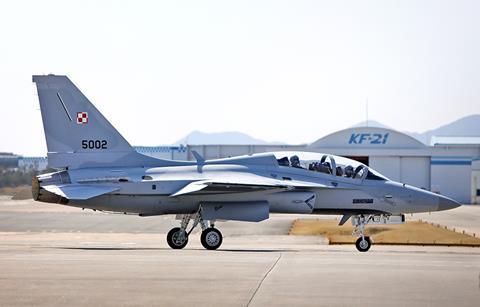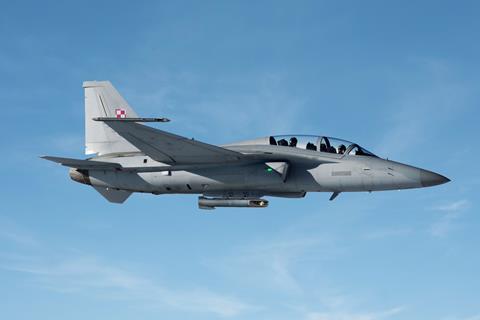Lockheed Martin says it is set to provide Sniper Advanced Targeting Pods to Poland for use aboard the Korea Aerospace Industries (KAI) FA-50 light-attack jet.
The company notes that the pods are covered by a $90.7 million Foreign Military Sales (FMS) contract from the US government.

The package includes the targeting pods with two-way datalinks, system support, and spare parts. The company did not provide a timeline for deliveries.
“The targeting-sensor system will be integrated onto Poland’s new FA-50 fighter jets,” says Lockheed.
“Integration of Sniper ATP will improve the tactical effectiveness of Poland’s FA-50s by enhancing their ability to identify, track, and engage targets from standoff distances.”
Lockheed did not list the number of pods to be provided, but a US Defense Security Cooperation Agency FMS notification in May 2023 listed 34 as the potential number.
That potential deal was valued at $124.7 million. Contract modifications and changes, however, frequently affect the ultimate value of FMS sales.

Sniper pod integration for the FA-50 was a long-term objective for KAI, which it finally achieved in 2021. The Sniper pod greatly increases the FA-50’s passive detection capabilities against a range of targets.
In addition to performing intelligence, surveillance and reconnaissance, the sensor can be used to designate targets, including moving vehicles.
Polish Lockheed F-16s already use Sniper pods. Lockheed says that the pods used by both the F-16 and FA-50 can be “quickly upgraded” to the more advanced Sniper Networked Targeting Pod.
Poland operates 12 FA-50GFs, which are in a configuration similar to South Korea’s FA-50s. It is awaiting 36 FA-50PLs to be delivered in the 2025-2028 timeframe.
LITENING POD COMPLETES EARLY SUPER HORNET TESTS
The Northrop Grumman Litening pod has completed initial flight tests for the Boeing F/A-18E/Fs of the US Navy.
The company says this is an important step before the pods enter fleet operations.
“The tests put the electro-optical/infrared pod through a set of demanding manoeuvres representative of operational scenarios,” says the company.
“Litening’s daylight and infrared sensors provide high-definition video in multiple wavelengths to deliver a decisive advantage in surveillance and targeting missions.”


























